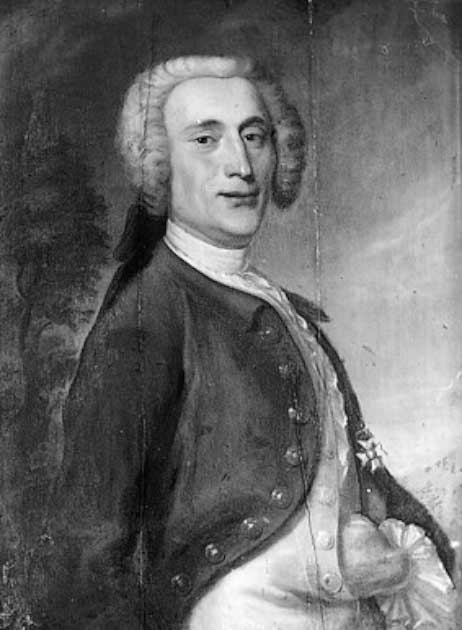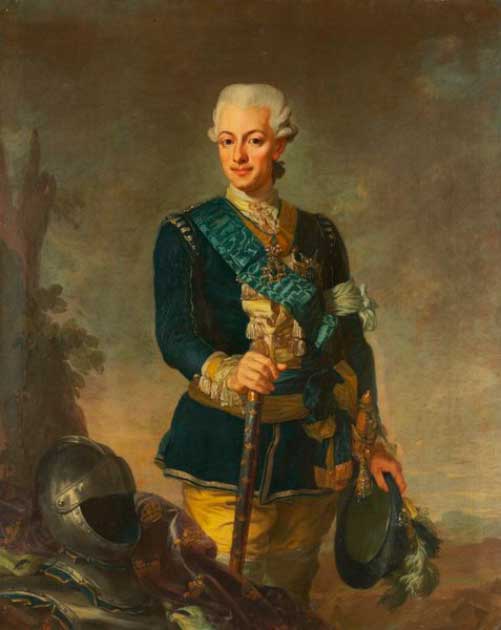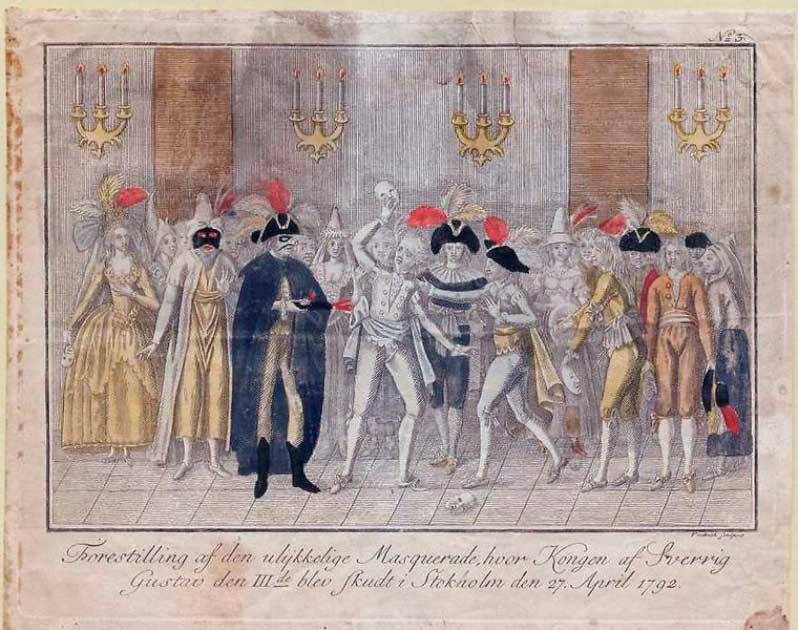Gustav III was born in January 1746 but his life was cut short in 1792 when he had been on the throne of Sweden for 21 years. His reign started in 1771 after succeeding Adolf Frederick of Sweden who was the uncle of Catherine the Great.
Gustav was a vocal opponent of his own nobility, who he saw as taking political privileges since the death of Charles XII in the 17th century. Gustav seized power from the nobility and governing bodies in 1772 through a coup d’etat: it may have been called the Swedish Revolution, but everyone knew what it was.
Through this, he instigated a campaign to restore monarchical power which was completed in 1789 through his Union and Security Act. A powerful man with powerful enemies, to be sure, but how did they get to him?
Born to Seize Power
Gustav was born in Stockholm and was placed under the tutelage of Hedvig Elisabet Stromfelt, a Swedish courtier, for the first five years of his life. After this, he was educated by eminent governors of Sweden called Carl Gustaf Tessin and Cark Fredrik Scheffer.
However, he claimed that he owed most of his shaping as a young man to the historian and poet Olof Von Dalin. An influential figure in the Swedish Enlightenment, his forward thinking humanist views would have influenced the young Gustav, although Dalin was not free from scandal at the Swedish court.

Throughout Gustav’s educational years, he was constantly distracted and disrupted by state interference. There were many political disruptions in the royal family as the nobility sought to exert more and more power. This led to Gustav despising the governors who were imposed upon him by the Riksdag (the parliament of Sweden) all of which were fostered and enflamed by his parents.
Through this environment, Gustav became acclimatized and experienced in the art of intrigue and duplicity so much so that even the teachers who were most hostile to him were said to be amazed by his natural gifts. It was these skills that he would need throughout his reign on the Swedish throne.
Family
Gustav married Princess Sophia Magdalena, daughter of Frederick V of Denmark, in Copenhagen in October of 1766. Though this was done by proxy, Gustav claimed to be impressed by her beauty but disappointed by her silent nature in court.
- Eric IX of Sweden: Why was the Beloved King Hacked to Pieces?
- Helga de la Brache: Heir to Sweden’s Throne?
The match itself was not a happy one. They were two different people with incompatible temperaments. It was not aided by the interference of Gustav’s mother Louisa Ulrika who grew jealous of her son’s wife and her potential importance.
Gustav and Sophia had two children: Prince Gustav Adolf and Prince Carl Gustav. However, Carl Gustav died before the age of one. It is suspected that this was from inappropriate food. Gustav was heartbroken and was unable to attend the funeral.
Rumors were spread that Gustav Adolf was not the true heir of Gustav: the story was that he had been born from an encounter between Sophia and Adolf Munck, a physician who had been called in to help the couple consummate the marriage.
These rumors were given some validity as they were spread by Gustav’s mother. There is almost certainly no factual basis that this was true but it served as a way to besmirch the king and queen’s names.
But by now Gustav was making his way in public life. Gustav’s first entrance to the political stage was during the December Crisis of 1768. He compelled the dominant Cap faction, made up of mostly peasantry and clergy, to summon an assembly to reform the constitution.
He hoped that he could encourage them to restore more power to the crown and the monarch. However, he was beaten by the other faction, the Hat party made up of mostly gentlemen and officers, who refused to grant any of the pledges that they had committed before their election.

Gustav began to turn abroad for support and was quite successful. He spent 6 weeks in 1771 in Paris where he was paid homage by the poets and philosophers of the city. Gustav would go on to keep up correspondence with many of the people he met in Paris at this time.
He did not spend his time idling the hours away though. He had already sent agents ahead of him to prepare the way and spoke to the Duke of Choiseul in order to spark a revolution in Sweden. Gustav also managed to secure the repayment of one and half million livres annually which would help with his political mission.
Rise and Fall
By 1772, the nobility held more power than the monarchy but was divided into two parties: the Hats and Caps. On his return, Gustav tried to mediate between them but was unsuccessful. The Caps resented this and attempted to reduce Gustav’s power to that of a puppet monarch. It was this that pushed Gustav to consider a coup.
- How Mad Was King George III of England?
- Assassination of Olof Palme: Who Killed the Swedish Prime Minister?
An insurrection had begun in the south of Sweden and during this Gustave was able to gather a small force of around 200 officers for him. They swore an oath of allegiance and paraded through the city.
On 21st August, Gustav appeared in full regalia and delivered a speech that is still viewed today as a masterpiece in Swedish oratory. He was well supported by both the townspeople and the officers. Swept to the throne in a whirlwind of popular support, he was recognized as King Gustav III of Sweden.
As king, Gustav ruled with absolute power and his reputation quickly began to erode. He accrued hatred amongst his people as he extended royal privileges and began a war with Russia.
The nobility that he had dispossessed required little motivation to begin plotting Gustav’s downfall. A conspiracy seems to have been formulated since 1791 but did not come to fruition until 1792, some twenty years into Gustav’s reign.
An assassination was planned by Jacob Johan Anckarstrom who chose to carry out the murder with knives and guns. It was enacted on a night when there was a masked ball at the Royal Opera House.
The conspirators sent threatening letters to the king but he was not to be deterred from attending the ball. In fact, Gustav encouraged the plotters to strike, walking out into an open box facing the opera stage.

Anckarstrom was ready for him, however, striking when the king was walking down the corridor. He fired his shot but was at an angle that struck Gustav in the hip region. Whilst not being shot dead, the wound proved to be fatal, and Gustav died 13 days later. Today, the chair upon which he sat after being shot can still be seen stained with blood.
Top Image: The mask worn by Anckarström to the masked ball, at which he shot Gustav III. Source: LSH / Public Domain.
By Kurt Readman